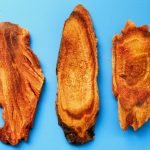Managing PCOS: Use of Progestins & Progesterone
KHIVAN OBEROI, ND
ERIN FIX, ND
Polycystic ovary syndrome (PCOS) is well known for having a complex hormonal and metabolic pathophysiology. Patients may seek out naturopathic care for a holistic approach that can address hormonal concerns at various points in their lifespan. Whether the patient is seeking to prevent conception, manage aberrations in menstrual cycles, or enhance fertility, progesterone irregularities are a common and fundamental issue that must be considered. A comprehensive naturopathic approach to PCOS treatment involves a thoughtful evaluation of endogenous and/or exogenous progesterones.
Progestins
Synthetic progestins not only act on progesterone receptors, but have varying degrees of affinity for estrogen, androgen, and mineralocorticoid receptors.1,2 For patients with PCOS, choosing a form of contraception with a lower affinity for androgen receptors may reduce the chance of exacerbating testosterone-driven symptomology (eg, acne, hirsutism). Progestins with strong binding affinity to androgen receptors include norethindrone, levonorgestrel, and cyproterone acetate.1,2 Also, it is valuable to note that androgens are not solely responsible for acne, as strong progestins can also exacerbate acne by causing sebaceous gland hypertrophy. Oral contraceptives that contain norgestimate, which has a much lower affinity for androgen receptors, may represent a better choice for PCOS patients that are struggling with acne.2,3
Other progestins with relatively low binding affinity for androgen receptors include dienogest, drospirenone, desogestrel, and nomegestrol acetate.1,2 Based on a 2018 meta-analysis, combined oral contraceptives reduce free and total testosterone and dehydroepiandrosterone sulfate (DHEAS), and increase sex hormone binding globulin (SHBG), regardless of the progestin’s binding affinity for androgen receptors.3 Unfortunately, most of the studies in this area have been small, and those specific to patients with PCOS were performed using outdated contraceptive options.3 It is possible, and even likely, that if larger studies were performed on patients with PCOS who were using newer, more commonly prescribed contraceptives, differences in the androgen-lowering potential of different combined contraceptive options would be further illuminated.
In addition to pregestin/progesterone management, for patients seeking symptomatic support, an emphasis on lifestyle habits is crucial for success. Fine-tuning carbohydrate intake and enhancing muscle mass can help mitigate insulinemic effects on ovarian function. Stress management habits are also critical to stabilize hypothalamic-pituitary-adrenal (HPA) axis function and blunt the negative effects of cortisol and DHEA on ovarian activity.
Case Study 1
AT, a 20-year-old female, presented seeking contraceptive options with hesitation towards pharmaceutical contraceptives due to fear of weight gain. She had a classic PCOS phenotype, experiencing menstrual irregularities, acne, hyperlipidemia, and prediabetes. Given the combination of endocrine and metabolic pathophysiology of PCOS, we discussed the importance of nutrition and exercise to address her elevated cholesterol and insulin/glucose levels. In considering contraceptive options for this patient, we considered the impact different progestins can have on androgen receptors, potentially exacerbating acne and inducing hirsutism.
AT desired a non-oral contraceptive. Of the available options, a vaginal ring that contained etonogestrel was determined to be the least androgenic.1,2 Because birth control implants can also be found that use etonogestrel, this was another option. For comparison, levonorgestrel-containing intrauterine devices would have been the most androgenic choice.1,2
AT decided the etonogestrel-containing implant would meet her needs best. While the vaginal ring may have offered a lower chance of symptom exacerbation, ease of use was equally important for AT. Based on these criteria, the implant was the best choice to meet the patient’s desire for a low-maintenance contraceptive option.
Case Study 2
RT, a 38-year-old female, presented with oligomenorrhea, acne, and premenstrual mood swings. Previous experiences with oral contraceptives had been unsuccessful and caused side effects that were intolerable. Lab evaluation identified an elevated luteinizing hormone/follicle-stimulating hormone ratio (LH/FSH) and elevated testosterone with otherwise normal metabolic markers. Our treatment plan involved normalizing ovarian function with myo-inositol and Vitex agnus-castus, addressing testosterone-driven acne with spironolactone, and providing support for stress management with counseling.
Due to her oligomenorrhea, we encouraged the use of progesterone withdrawal to trigger a menstrual cycle. Laboratory analyses for PCOS are commonly performed in the early follicular phase of the menstrual cycle. This can be problematic if a patient has irregular cycles, necessitating a provider to trigger menses via progestin withdrawal. This is conventionally done with medroxyprogesterone, although bioidentical oral progesterone can be used as well. Research is limited on the impact of progestin withdrawal on blood levels of LH, FSH, and androgens. Based on a 2002 study by Bagis et al, both oral medroxyprogesterone and bioidentical oral progesterone appear to reduce LH levels without impacting FSH, testosterone, or DHEAS.4 Therefore, providers should be aware that using the progestin withdrawal method can lead to lab values with falsely decreased LH levels. While an elevated LH/FSH ratio is not required for the diagnosis of PCOS, decreased LH levels can mask abnormalities in these values. This information is valuable for laboratory interpretation and monitoring of the patient’s response to treatment.
RT initially opted for the use of bioidentical oral progesterone, but this was unsuccessful. We moved onto the conventional use of medroxyprogesterone, which did trigger a menstrual cycle. We discussed the use of Vitex to encourage normal ovulation, either in place of or alongside bioidentical progesterone. RT was open to an integrative approach, so we initiated daily intake of 250 mg Vitex and 100 mg oral micronized progesterone in the luteal phase.
RT went on to have regular menstrual cycles and a significant reduction in her acne and mood swings over the next 8 months. After 4 months, we wanted to assess the patient’s ovulation frequency. For precision, we recommended that she use an ovulation predictor kit at midcycle to identify the LH surge. After 7 days, the patient had a serum progesterone test to confirm ovulation and sufficient progesterone for endometrial protection. This provided an initial indication that discontinuing the oral micronized progesterone would be possible, assuming the patient continued to have regular menstrual cycles. RT was open to using home urine tests to evaluate progesterone metabolites on a quarterly basis, with the agreement that if testing did not indicate sufficient endogenous progesterone, we would restart oral micronized progesterone.
Case Study 3
For patients seeking integrative fertility support, it’s important to keep in mind that PCOS is the leading cause of anovulatory infertility.5 As such, prioritizing normalization of the HPA-ovarian axis to allow for ovulation and progesterone production is the primary goal for these patients. Progesterone support during the 1st trimester may be indicated, especially if ovulation-inducing medications are used or recurrent miscarriage is a part of the patient’s history.
SG, a 33-year-old female patient, presented with hypothyroidism and PCOS seeking naturopathic care to achieve pregnancy. Her PCOS history included long stretches of amenorrhea that she managed with episodic use of medroxyprogesterone. She became pregnant after the use of clomiphene for ovulation induction but miscarried at 7 weeks of gestation. The trauma of her miscarriage experience strongly influenced her desire to avoid the use of ovulation-inducing medications and pharmaceutical hormones. Initial labs found an elevated LH/FSH ratio, normal estradiol and testosterone levels, and a TSH of 3.34. Keeping in mind that TSH should be <2.5 when addressing infertility,6 we adjusted her thyroid medication. We followed up with myoinositol, Vitex, and seed cycling, along with aggressive dietary and exercise modifications.
At her 3-month follow-up, the patient was amenorrheic but had lost 6 pounds and her waist-hip ratio was now <1, indicating improved insulin function. We discussed the use of progestins to trigger withdrawal, but the patient was hesitant. In this case, we used USP progesterone cream for 14 days and were successful in initiating a cycle. After 3 months of regular menstrual cycles with positive home ovulation tests but no pregnancies, we revisited the idea of ovulation-inducing medications. The patient felt more comfortable utilizing letrozole (an aromatase inhibitor) than clomiphene, and we recommended utilizing either USP progesterone cream or vaginal progesterone. After 2 cycles of letrozole followed by vaginal progesterone suppositories, the patient had a positive home pregnancy test and went on to deliver a healthy infant.
Conclusion
Progesterone is an incredibly valuable hormone. Its primary purpose is to mature the endometrial lining and allow for embryonic implantation and development. The use of progesterone in a holistic manner, however, can have varied impacts on a person’s quality of life. For some patients with PCOS, progesterone will regulate their menstrual cycles while alleviating mood swings. For others, synthetic progestins allow the choice and security of preventing undesired conception. It is still important to remember that progesterone – bioidentical or synthetic – is near the upper end of the naturopathic therapeutic order. It carries the risk of side effects, and many patients may struggle with mood swings, fluid retention, mastodynia, or other adverse reactions.
Naturopathic tools involving nutrition, exercise, and stress management, along with herbal therapies, are foundational to any treatment success. Given the many ways that managing PCOS can affect a patient’s life, patients commonly need guidance around their treatment, so conversations about blending our naturopathic and pharmaceutical toolboxes become part of the patient education aspect of our care. As part of a comprehensive treatment plan, whether progesterone is enhanced endogenously or provided exogenously, the thoughtfulness around form, timing, and dosage can provide notable improvements in the quality of life for patients with PCOS.
References
- Barra F, Scala C, Ferrero S. Current understanding on pharmacokinetics, clinical efficacy and safety of progestins for treating pain associated to endometriosis. Expert Opin Drug Metab Toxicol. 2018;14(4):399-415.
- Schindler AE, Campagnoli C, Druckmann R, et al. Classification and pharmacology of progestins. Maturitas. 2003;46 Suppl 1:S7-S16.
- Amiri M, Kabir A, Nahidi F, et al. Effects of combined oral contraceptives on the clinical and biochemical parameters of hyperandrogenism in patients with polycystic ovary syndrome: a systematic review and meta-analysis. Eur J Contracept Reprod Health Care. 2018;23(1):64-77.
- Bagis T, Gokcel A, Zeyneloglu HB, et al. The effects of short-term medroxyprogesterone acetate and micronized progesterone on glucose metabolism and lipid profiles in patients with polycystic ovary syndrome: a prospective randomized study. J Clin Endocrinol Metab. 2002;87(10):4536-4540.
- Dennett CC, Simon J. The role of polycystic ovary syndrome in reproductive and metabolic health: overview and approaches for treatment. Diabetes Spectr. 2015;28(2):116-120.
- Orouji Jokar T, Fourman LT, Lee H, et al. Higher TSH Levels Within the Normal Range Are Associated With Unexplained Infertility. J Clin Endocrinol Metab. 2018;103(2):632-639.

Khivan Oberoi, ND, is a National University of Natural Medicine (NUNM) alumna coming from an extended family of naturopathic physicians. After completing her residency at NUNM, she specialized in women’s health at her private practices in Portland and Salem, Oregon. In 2018, she launched a telemedicine practice, helping patients across the globe improve fertility. Dr Oberoi has also been invited to share her expertise with the naturopathic community by teaching the Advanced Gynecology: Infertility elective at NUNM and by presenting for the Oregon Association for Naturopathic Physicians as a part of their monthly lecture series.

Erin Fix, ND, practices in Canby and Salem, Oregon. She specializes in women’s health, hormones, and mental health care. Dr Fix is an expert in therapeutic nutrition and was formerly a nutritionist before attending medical school. She uses nutrition to help treat high cholesterol, IBS, menopausal weight gain, and PCOS. Originally from Wisconsin, Dr Fix brings a warm, Midwest hospitality to her patient care. She enjoys eating curry, working on home projects, surfing the Oregon coast, and biking trails with her dog (an Aussie named Otto).









